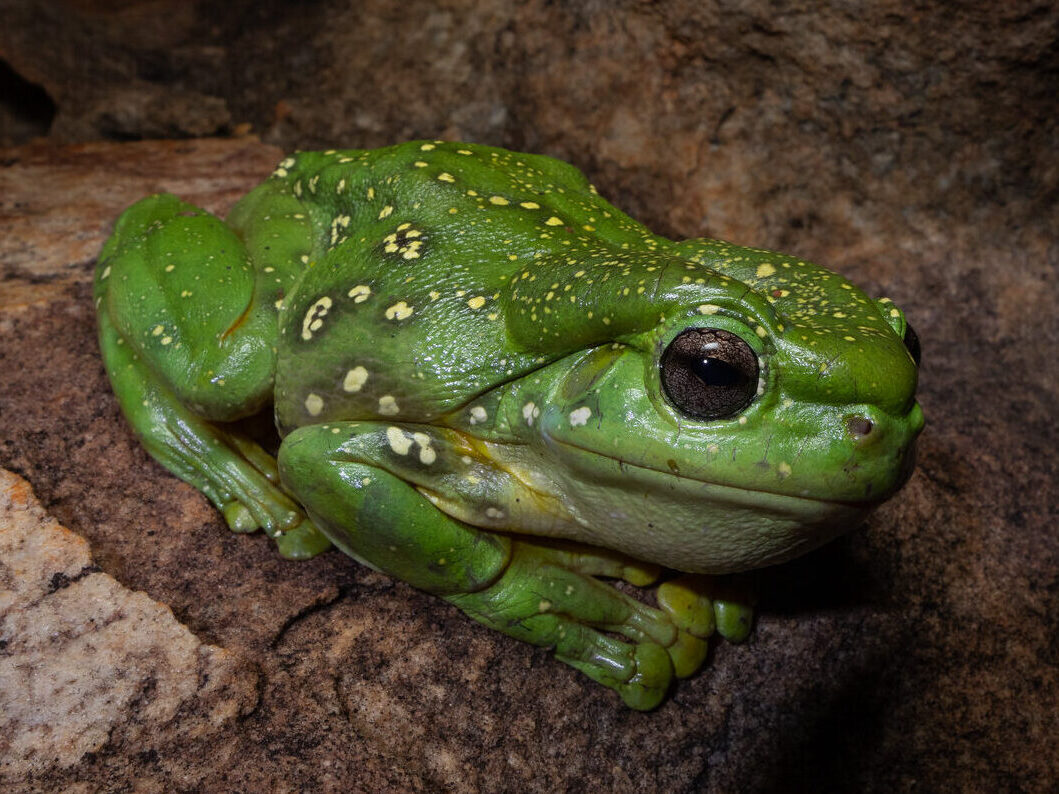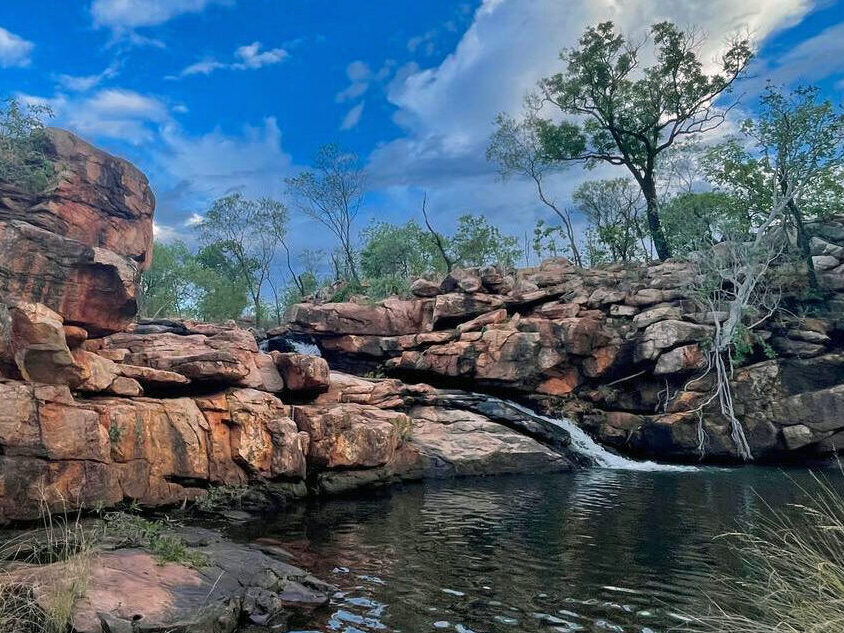Mutant blue frog excites ecologists

Have you ever seen a magnificent tree frog? Endemic to Australia’s north-west, Litoria splendida is normally green, with white spots.
But the magnificent tree frog recently discovered by Australian Wildlife Conservancy (AWC) ecologists is anything but normal!

The bright blue individual is living within AWC’s Charnley River-Artesian Range Wildlife Sanctuary, on Wilinggin Country. Incredibly, it was first spotted within just metres of the team’s research station.
“I was out there at the time and I got a message with a photo of the blue frog from another member of our team, asking what the cool frog was,” says AWC field ecologist Jake Barker. “As soon as I saw the picture, I was pretty excited – it was rare, so I ran down with my own camera.”
“Magnificent tree frogs are already spectacular, they’re very pretty frogs to begin with when they’re green… So to see a blue one rates pretty highly on the list of cool things I’ve seen on this job.
“And we were able to find it a second time, about a week later,” says Jake. “No one’s really looked for it since then, so there’s a decent chance it’s still hanging around the vicinity.”
Why is the frog blue?
The frog’s blue-coloured skin is due to a rare genetic mutation called ‘axanthism’.

“Essentially, green frogs have both blue and yellow pigments in their skin. The pigments combine and that’s why green frogs are green,” Jake explains.
“This mutation basically inhibits the yellow pigments so only the blue ones come through.”
Is this a first?
AWC ecologists believe this may be the first recorded instance of axanthism mutation in a magnificent tree frog.
Amphibian expert Dr Jodi Rowley adds that axanthism is an extremely rare occurrence in any frog species.
“I’ve seen tens of thousands of frogs over the years, but I’ve only seen one blue frog – and it was nowhere near as spectacular as this magnificent tree frog,” Jodi says.





